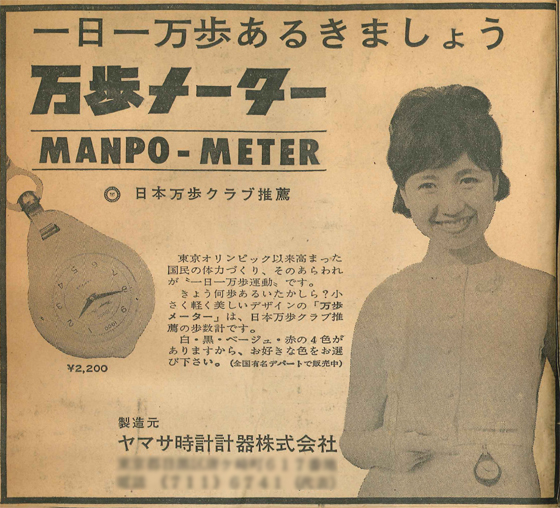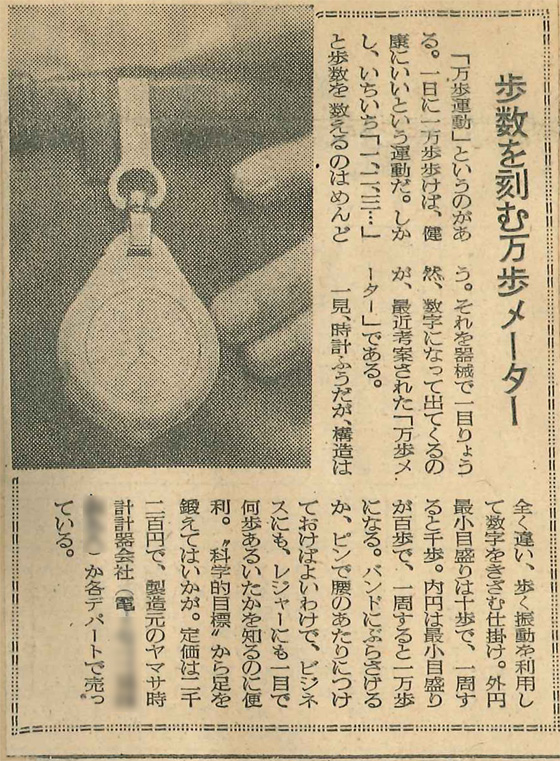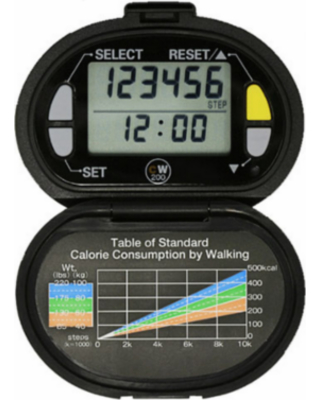The predecessors of fitness bracelets: pedometer, heart rate monitor, bike computer

Fitness bracelet - a gadget that quickly gained popularity due to the fashion for a "sporty" and "healthy" lifestyle. Today it can be seen on hundreds of hands; computer geeks and specialists of “office” professions are noted in a special love for him.
This device came to the market from professional sports - which is quite predictable. But otherwise, the history of the invention of the fitness bracelet and its advancement to the masses is full of interesting twists and turns.
Long before the era of gadgets, wearable electronic devices for athletes appeared: heart rate monitors and cycle computers. Their task was to collect activity data during training for later analysis.
Cyclocomputers , or cyclometers, consisting of a sensor and a data processing unit connected to it, measured the distance traveled and, subsequently, the speed of movement. The first of these devices was patented by the Veeder Manufacturing Company at the end of the 19th century (1895). At first, cycling computers were analog: the sensor on the wheel was connected to a simple odometer on the steering wheel, where the athlete could see the displayed data on the distance traveled.

Advertising cyclometer Veeder Manufacturing Company, 1899
Book"A History of Cycling in 100 Objects" (Suze Clemitson) describes in detail the following stages of development of this device: in the 1970s, Haret Multito invented a device connected to the front axle using an elastic drive belt. It could also record the distance traveled. And the Avocet 20 cyclometer , developed in 1983 and launched on the market in 1985, became the first electronic cycle computer . It was a system with a sensor and a magnet in which the sensor was attached to the frame, and the magnet to the wheel rim, and every turn of the wheel was recorded. The computer converted these indicators into speed and number of kilometers traveled.

Later, the inventors added a wireless sensor connection to the main unit, and a few years later - navigation via GPS and Internet services, where users can save their tracks and compete with other cyclists.
Heart rate monitors are much younger. Although ECG monitors were known before, but they all consisted of a box with wires, the ends of which were attached to the chest. And the first wireless wearable ECG monitor appeared in the sports medicine industry only in 1977. The company Polar Electro developed it for the Finnish national ski team and patented it as an “optical pulse sensor”. A year later, a version for mass production was released, but such monitors were used mainly in sports.
Three years later, Polar Electro, which became a pioneer in the industry, developed the Polar Sport Tester PE 2000 sports smart watch with a heart monitor for mass production. The sensor reads the pulse, and this value was displayed on the screen below the time readings.

Polar Sport Tester PE 2000
In the following model, the Polar Sport Tester PE 3000, a computer interface was integrated. After a workout, the owner of the watch could output data from the device to a computer and analyze it.
A watch with a pulsator from Polar can be considered a direct ancestor of modern fitness bracelets with a heart rate monitor. But there was no pedometer in them.
Pedometer for the recovery of the nation
Devices for counting the number of steps have been known since the 16th century (a sketch of such a device by the hand of Leonardo Da Vinci has been preserved), and the first patent for a pedometer was issued to XX Briton John Harwood. Their inventors were far from sport: in the days of Leonardo they tried to determine how much the army overcomes for the day's transition, and later versions of the invention should help in measuring the distance.
The first marketing campaign of a pedometer as a fitness gadget was organized by Dr. Yoshiro Hatano, a professor at the University of Health and Welfare Kyushu (Japan) in the 1960s. At that time, the problem of obesity of the nation and the associated rise in cardiovascular diseases, as well as diabetes, became urgent in Japan. Khatano conducted a series of studies of physical exercises and calories burned and concluded that the sedentary lifestyle of the Japanese was to blame for the problem. In order to instill in his fellow citizens a love of movement, he began selling a compact mechanical device for counting the steps of Manpo-key. It was designed by Giro Kato (Tokyo), the founder of Yamasa Tokei Keiki Co., Ltd. It was the first wearable pedometer released to the mass market.



The “Manpo-Key” pedometer resembled an onion pocket watch. It used a mechanism with a load that responds to the steps on the principle of a pendulum, and a simple counter. The developers suggested wearing a pedometer on a belt or in a pocket. And advertising photos emphasized that this is a universal thing for people of any profession and income level: athletes, workers, civil servants, professionals and service workers. The pedometer was set at 10,000 steps - that’s how much Dr. Yoshiro Hatano considered sufficient for the average Japanese. About the achievement of the result "Manpokay" notified the owner.
In his works, Hatano writes that the average Japanese takes up to 4,000 steps a day and overeat about 300-400 kcal. According to his calculations, 10 000 steps per day will allow to burn about 500 kcal daily, which is enough to solve the problem. Now, after more than half a century, these studies are outdated. But many pedometers still set this value as sufficient. And the Ministry of Health of Japan and the National Forum on Obesity in the UK to this day include it in recommendations for citizens.

Digi Walker MINI EM-200
The next step in development was the emergence of electronic pedometers. It is believed that the first such gadget was a device called Digi Walker MINI EM-200, which entered the market in 1987. The electronic pedometers use an accelerometer, which measures the negative acceleration of the body at the moment of contact of the foot with the ground. Therefore, the gadget is recommended to hang on the belt, where this indicator is particularly well recorded. The belt pedometers, or pedometers, have an electronic display that shows the number of steps taken, the distance traveled, and other indicators.
Pedometers with a screen are still sold and used mainly as a means of rehabilitation. They are popular with older people because they do not need a smartphone to use them.
The course for compactness and versatility
Then the pedometer developed along the path of compactness and expansion of functions. It integrated with wrist watches (2001) and mobile phones (2004). In the early 2010s, fitness bracelets appeared: a separate gadget for counting steps, worn on the wrist.
Fitness bracelet in the form that we know, took the functions of several gadgets. Polar type heart rate monitor - pulse measurement technology; pedometers - a method of counting steps using an accelerometer, standards of steps and algorithms for calculating the distance; cycling computers have interactive applications to save and share results. The first fitness bracelets with a small set of functions appeared in the beginning of the 2010s: the pioneer of mass production called the company Jawbone, which in December 2011, released its first model of this device, Jawbone UP.
The first bracelets appeared on the shelves in the pre-Christmas “Black Friday”. Thanks to the well-chosen date and high-quality advertising campaign, the party was bought in a matter of days. But then the manufacturer was bombarded with angry calls and letters: the bracelets spontaneously turned off . Jawbone had to urgently find the cause of the problem and free of charge to exchange all the sold bracelets for new ones. But, despite this embarrassment at the start, in the first 4 years the company sold over 4 million of these gadgets, and its market share reached 21%.
Now fitness bracelets compete with each other in design, the number of functions, sensor accuracy and convenience of applications, where you can mark your progress and compare the result with other users. The largest market players are Fitbit, Jawbone, Nike, Xiaomi. However, today manufacturers of fitness bracelets have to make room because of the growing popularity of “smart watches” by Apple, Samsung and other manufacturers with the functions of a pedometer and heart rate monitor.
Look at the latest developments in the field of wearable devices in the M-Health demo zone on April 3rd. In addition, several reports at the conference will be devoted to promising trends in this area.
